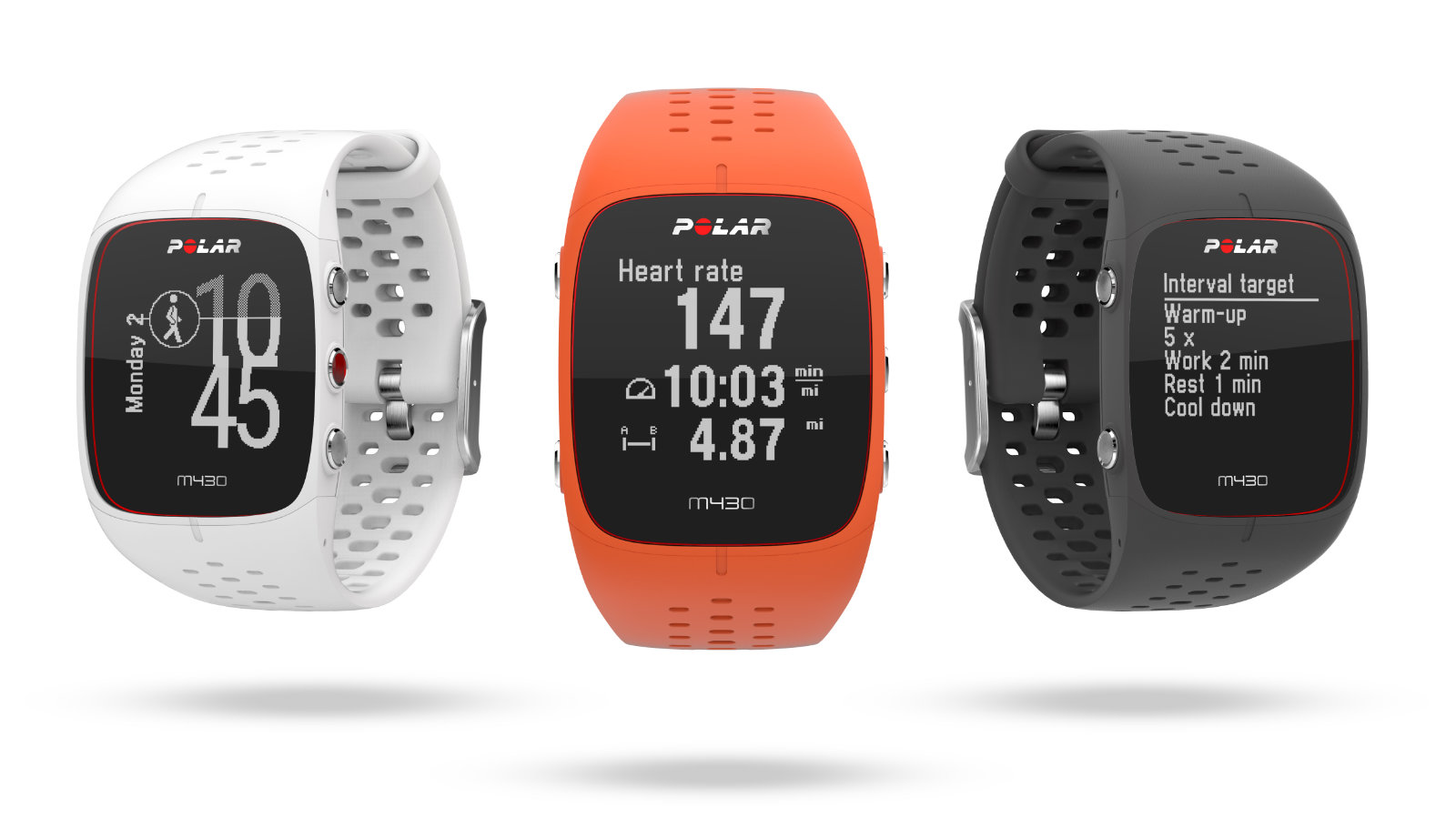The Polar M430 is a fitness tracker that fills in the blanks
A wearable catered to the casual and hardcore

The best fitness trackers serve a purpose that bends to the will of many different crowds. That’s part of what makes them great. But what makes them not so great is that this broad accessibility has resulted in a dumbed down experience, generally speaking.
Fitness notifications have become generalized and vague, and the workout data that you pour sweat and determination to create is all but meaningless when most trackers don’t use it to point you in a crystal-clear direction.
The Polar M430 wants to change that.
As the successor to the popular Polar M400, the M430 borrows its general anatomy: a flexible silicon bracelet that’s more breathable than ever, and the set of tried-and-true physical buttons to make navigation easy when you’re mid-workout. But there appears to be a lot of thoughtful changes going on here.
How's it different?
For every similarity the M430 shares with Polar’s previous devices, it makes a few changes both on the surface and under it.
The company recently experimented with a color-filled screen when it took the leap to the Android Wear 2-packed Polar M600, but the M430 emerges with a monochrome display to maximize readability in all lighting scenarios.
Gone is the microUSB charging slot in favor of a proprietary port that charges faster, boasts a more secure lock and better yet, helps to achieve its IP68 rating without sacrificing looks and accessibility.
Next up, it features optical heart rate monitoring with six LEDs that are tuned with a unique algorithm to compensate for the “pendulum effect”, when the wearable shifts ever so slightly during a workout. Most smartwatches and fitness trackers ask you to secure them uncomfortably tight to reduce movement, but Polar’s latest can keep heart rate reading accuracy high even when it jiggles around a bit.
You’ll find GPS inside of the M430, which is essential to track your runs around town. But what’s really interesting is that Polar has figured out how to closely approximate both distance traveled and your pace with just accelerometers. What this means is that when paired with GPS, your results will be more accurate than ever.
But for those who enjoy running on a treadmill, this wearable finally solves the problem of tracking distance when running in place, all while minimizing the wear on your battery.

A few more unique features
Speaking of battery performance, the M430 is said to last for weeks on end when used solely as a vessel for your smartphone notifications. If you want to max-out this tracker’s capabilities, including its GPS mapping, you’ll get about eight hours from it.
Polar’s M400 successor features a low-power mode that can last somewhere around the 25-30 hour mark. What’s noteworthy about it compared to other wearables is that this mode doesn’t cut away any of the special functionality listed above. Compared to full-power mode, which fetches positional data every second, low-power mode reduces it to once per minute. That’s the only change.
While the granularity of your fitness readings may be reduced from the regular mode, Polar is confident that, so long as your training doesn’t necessitate perfect, second-by-second readings, the data provided by low-power mode will be accurate enough for most.
Lastly, Polar Flow, the free companion app, takes a unique approach to coaching users. Instead of barfing out arbitrary numbers with little to no context after each workout, Polar does the opposite. Not only does it feed you the digits you seek, it offers up constructive feedback on what you’ve done to improve yourself and what you need to do next.
On top of that, the app’s unique running program puts up a score post-exercise that’s similar to the VO2 Max index (the volume of oxygen absorbed into the blood through working out). It’s an unbiased metric with which you can judge your performance, which only further attests to Polar’s dedication to helping users get fit on their own terms. You don’t have grind yourself down to the bone to beat yesterday’s record. Polar’s running index is all about rewarding you for just keeping to your workouts.
The Polar M430 is available for pre-order in orange, white, and gray color options, and you can expect to see it launch in May for the price of $229, £199.50 (about AU$302). Stay tune for the full review around that time.
Get daily insight, inspiration and deals in your inbox
Sign up for breaking news, reviews, opinion, top tech deals, and more.
Cameron is a writer at The Verge, focused on reviews, deals coverage, and news. He wrote for magazines and websites such as The Verge, TechRadar, Practical Photoshop, Polygon, Eater and Al Bawaba.
